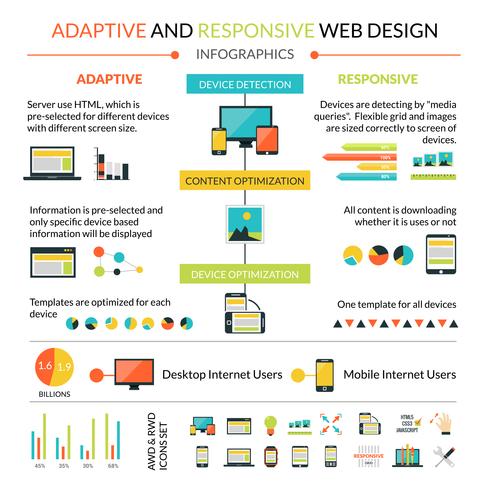Essential Elements Of Web Design: Standards For Establishing A User-Centric Website
Essential Elements Of Web Design: Standards For Establishing A User-Centric Website
Blog Article
Post Composed By-Hovmand Skinner
When it involves site design, making certain user-friendliness is crucial. From responsive layout to structured navigating, every aspect plays an important function in developing a website that deals with your audience's requirements. However what about the finer details that can make or damage an individual's browsing experience? Keep tuned as we reveal some often-overlooked tips that can elevate your website's use to the next level, making it genuinely attract attention in the electronic landscape.
Significance of Responsive Style
Responsive style is a critical facet of modern-day website development. Ensuring your web site is responsive means that it can adjust to various screen sizes and tools, giving a smooth experience for users.
With the boosting use mobile phones and tablet computers to access the internet, having a responsive design is essential for reaching a wider audience. It assists in improving customer experience by making your site very easy to navigate and keep reading any gadget.
In addition, responsive style can positively influence your internet search engine rankings, as search engines like Google focus on mobile-friendly websites. By having a receptive layout, you're additionally future-proofing your site, as brand-new gadgets with differing screen sizes remain to arise.
Simplify Navigation Framework
To improve user experience and promote simple access to info on your site, improving the navigating framework is critical. When designing your website, concentrate on developing a clear and instinctive navigating food selection that assists site visitors discover what they're searching for promptly.
Limit the number of menu things to the basics, organizing related web pages with each other to stay clear of frustrating users. Usage detailed tags that plainly suggest the material of each page, making it much easier for users to understand where each web link will certainly take them.
Think about applying dropdown menus for subcategories to prevent littering the main navigating bar. In addition, consist of a search bar prominently on the web page for customers that choose looking for particular details.
Prioritize mobile responsiveness in your navigating design to make certain simple gain access to on all tools.
Optimize Web Page Load Speed
Improving page lots speed is important for keeping site visitors on your web site. Slow-loading web pages frustrate customers and can cause high bounce prices. To optimize web page load rate, beginning by optimizing images. Compress images without compromising top quality to reduce their data dimensions.
Additionally, make it possible for browser caching to store often accessed sources locally, quickening load times for returning visitors. Minify CSS, JavaScript, and HTML files by getting rid of unneeded personalities, comments, and format, enhancing lots speed.
Take into consideration using a web content shipment network (CDN) to distribute your web site's material across multiple web servers worldwide, decreasing latency for users accessing your site from various areas. Lastly, restrict go to this website of third-party scripts and plugins, as they can dramatically influence load times.
Verdict
To conclude, by including responsive style, streamlining navigation, and maximizing web page load speed, you can develop a straightforward website that attract a larger target market and enhances customer experience. These essential elements guarantee that site visitors can quickly access and browse your website throughout various tools, causing boosted engagement and contentment. By focusing on Recommended Resource site , you can build an effective web site that keeps customers returning for even more.
